We are one week away from the start of the 2022 NFL Scouting Combine.
The combine provides draft prospects the opportunity to showcase their skillsets to NFL teams in person, many for the first time this offseason. Players will have the opportunity to display their on-field athleticism through various workout drills and their off-field football intelligence through interviews.
While we are a little over two months away from the draft, many of the top analysts in the business have been taking their turn predicting how the first round of this year's draft might play out.
One of the top draft experts in the business is NFL.com's Lance Zierlein. Every year, Zierlein writes up hundreds of prospects, ranking them compared to the rest of the class and providing analysis and even NFL comparisons for many of the players.
Zierlein released his 2022 prospect profiles this week and offered some intriguing NFL comparisons for some of the top ranked prospects in this year's draft class.
Here are the top 32 highest-graded players in Zierlein's rankings, along with analysis and an NFL comparison from the NFL.com draft expert.
1. Kyle Hamilton, S, Notre Dame
Analysis: "High-impact safety with unique blend of traits and characteristics that make him a bit of a unicorn at the position. Hamilton has the eyes and speed to play over the top, the strength and toughness to play near the line, and coverage length to guard elite pass-catching tight ends who often mismatch opposing defenses. It's rare to find such a ferocious striker and intimidator who has the football intelligence and athletic prowess to go make plays in the passing game, but Hamilton provides it all. He thrives playing downhill or sinking into a robber alignment on the back-end but will have occasional missteps in coverage when in retreat from his pedal. Hamilton has the traits and football character to transition from standout college moments to a standout pro career as a future Pro Bowler with All-Pro potential."
Comparison: Kam Chancellor
2. Aidan Hutchinson, DE, Michigan
Analysis: "Defensive end prospect with a can't-miss combination of football character, skill and physical traits who is more likely to contend for occasional Pro Bowls than become an All-Pro playmaker. Hutchinson's strength and flexion allows him to drop a deep anchor and set a very firm edge, and that is unlikely to change as a pro whether he's used in 4-3 or 3-4 fronts. He can be too mechanical, engaging in cursory contact rather than using his hands to whip the man in front of him quickly. Hutchinson is an instinctive rusher, assailing the pocket with a non-stop barrage of activity. His hands are skilled and efficient to grease the edge while fluid counter steps open inside paths to the pocket. He needs to add a few more items to his rush menu in order to maintain his rush production against NFL tackles. Hutchinson is scheme versatile and should be a very good starter with a very high floor, but his ceiling might not be as elevated as some of the talent he's been compared to."
Comparison: Kyle Vanden Bosch
3. Evan Neal, OT, Alabama
Analysis: "Three-year starter with rare combination of measurables, talent and pedigree. Neal has experience against the best competition the college game has to offer. He has started at both left and right tackle and should project on the left side if he can continue to manage his weight. While he has flashes of greatness on tape, he doesn't always maintain that level throughout a game. Intensity and consistency are two areas that will be key in matching performance with profile. Technique has been drilled into him and Neal plays with good fundamentals across the board. He's well-versed and capable in a variety of run schemes and has correctable areas of improvement in pass protection. Neal will come into the league as a good NFL starter, but greatness will require additional attitude and action."
Comparison: Jordan Mailata
4. Kayvon Thibodeaux, EDGE, Oregon
Analysis: "Enticing edge defender whose game is fueled by traits and power over skill and instincts at this juncture of his career. Thibodeaux is hardly a finished product, but has pro-ready attributes that should help him acclimate quickly. He's a plus run defender who punches above his weight at the point of attack with heavy hands and a sturdy base. He has some suddenness in tight quarters and above-average pursuit speed, which should keep the tackles for loss rolling in throughout his career. Thibodeaux rushes with effort, upfield burst and play-through power that should bring reasonable sack/pressure production. However, he needs to add some go-to moves and more skilled hands to his bag if he is to affect the quarterback more frequently and reach his lofty potential as a standout, two-way edge defender."
Comparison: Brian Orakpo
5. Ahmad "Sauce" Gardner, CB, Cincinnati
Analysis: "Long, lean and linear, Gardner's physical and football growth are on full display when comparing his 2019 tape to 2021. He's highly competitive with a confidence level that will be labeled as cocky by some evaluators. "Sauce" uses length and hand activity to impose his will on the release and stall the route on the tarmac. Staying connected to the route is a priority, which leads to grabbing when he feels it slipping away but that can be corrected by improving his footwork and trusting his technique. His movements lack fluidity, but he's urgent and aggravating in man-to-man, which could become a deterrent for NFL quarterbacks scanning to his side of the field if he can avoid a big spike in penalties as he adjusts to NFL officiating. Gardner has the traits and demeanor to become a highly effective CB1 within his first couple of seasons."
Comparison: Richard Sherman
6. Treylon Burks, WR, Arkansas
Analysis: "Big, smooth and natural, Burks possesses the versatility to operate from wherever you want and get to wherever you need no matter the competition. He's a mismatch receiver combining size, strength and competitiveness similar to the Titans' A.J. Brown, but appears to be faster and more athletic. Arkansas benefitted by putting the ball in his hands from a variety of alignments and there is no reason to believe NFL play-callers won't benefit from doing the same. For as talented as Burks is today, he's likely to keep getting better. He will require specific game-planning for defenses operating without a true CB1 and has the potential to star as a high-volume, three-level target who can start and produce in his rookie season."
Comparison: A.J. Brown (with more wiggle)
7. Trent McDuffie, CB, Washington
Analysis: "Three-year starter whose average size is overshadowed by skillful ruggedness, allowing him to contest throws from a variety of coverages. He's an elite competitor with a route-hugging mentality fueled by body control, foot agility, aggression and burst. He's a pesky press-man defender with the tools to excel in zone. He's willing to fly downhill and hit anybody near the football. He keeps his eyes on the prize and has an itchy, twitchy trigger to close throwing windows and make plays on the ball. He lacks lockdown traits but has lockdown talent and his competitive energy is contagious. He can play outside or from the slot and carries a very high floor with the potential to become one of the league's top corners at some point during his first contract."
Comparison: Jaire Alexander
8. Tyler Linderbaum, C, Iowa
Analysis: "Linderbaum has Pro Bowl potential but needs to be matched with a move-based rushing attack. He has the foot quickness and GPS to consistently find top positioning in the first phase of the block. He plays with leverage and body control to sustain and keep the running lane open. However, his size will make block finishing somewhat hit or miss and he will need help against some of the bigger defenders lining up across from him. Teams with certain size standards might pass on him but his tenacity and talent make him a can't-miss prospect if matched in the right scheme."
Comparison: Jason Kelce
NFL Media analyst Daniel Jeremiah released his final edition of the top 50 prospects in the 2022 NFL Draft.

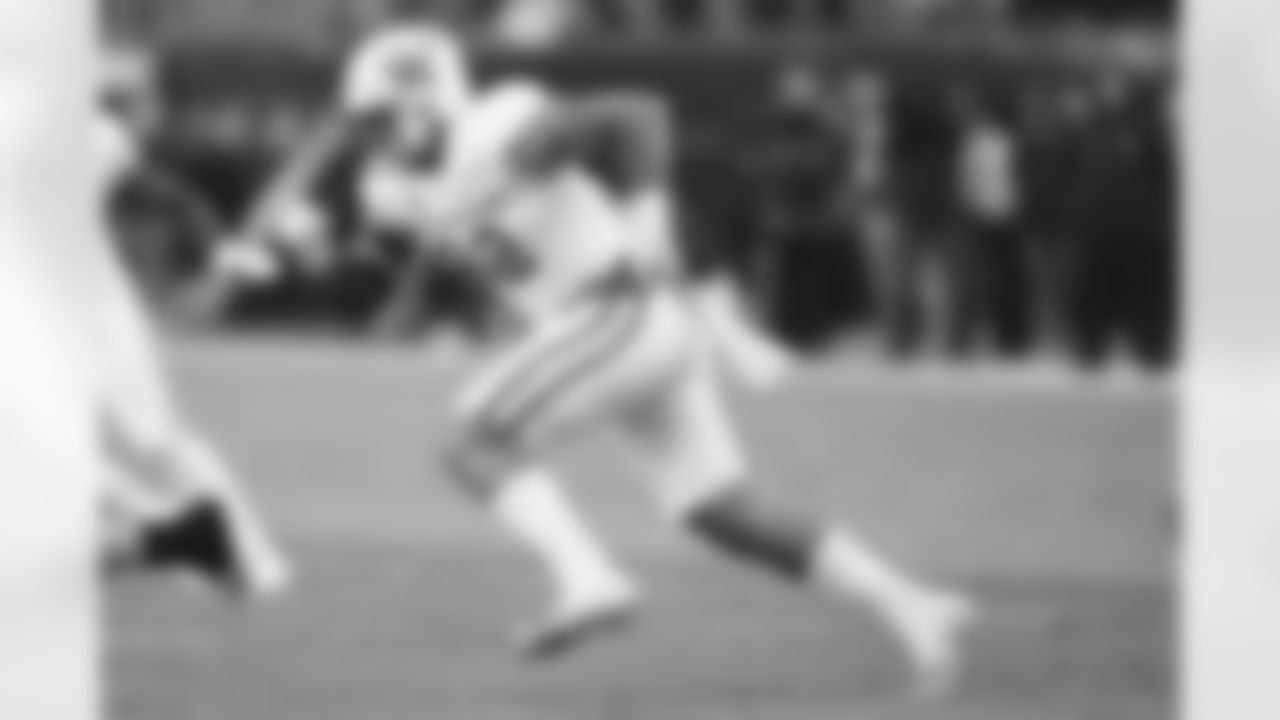
No. 50 Logan Hall, DT, Houston

No. 49 David Ojabo, EDGE, Michigan

No. 48 Sam Howell, QB, North Carolina

No. 47 Kaiir Elam, CB, Florida

No. 46 Christian Watson, WR, North Dakota State

No. 45 Skyy Moore, WR, Western Michigan
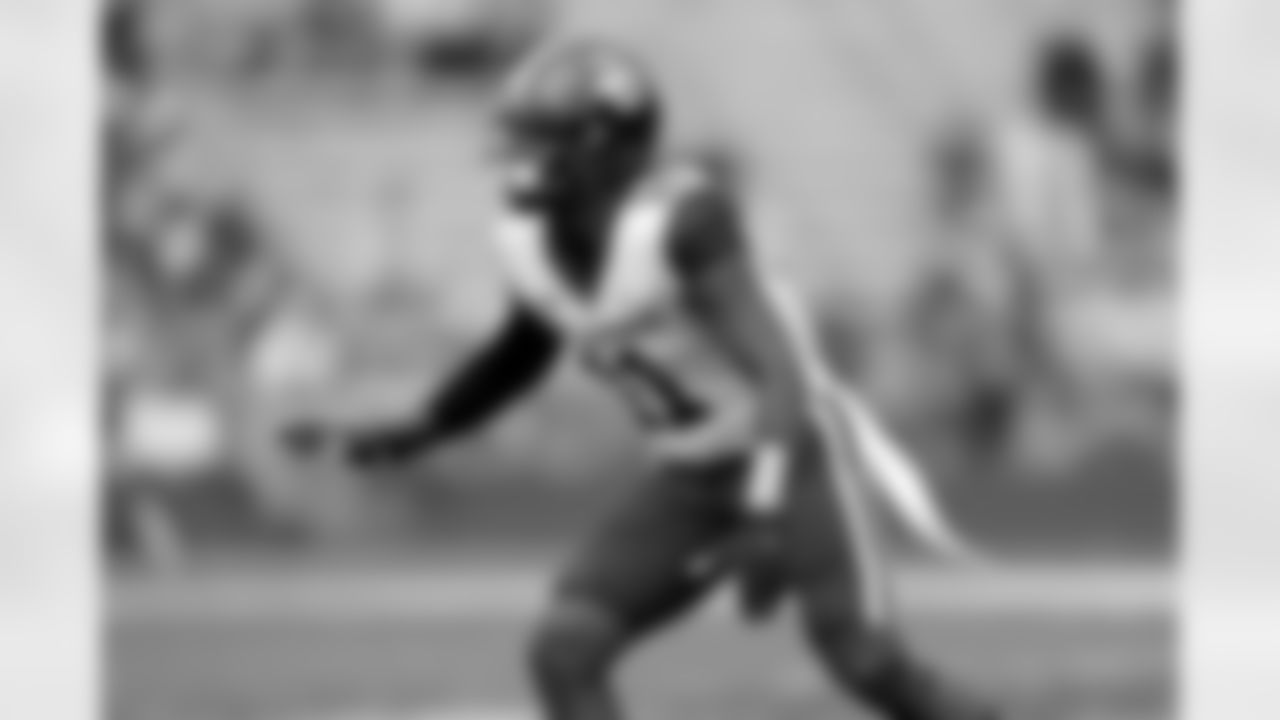
No. 44 Nik Bonitto, EDGE, Oklahoma

No. 43 Bernhard Raimann, OT, Central Michigan

No. 42 Tyler Smith, OT, Tulsa

No. 41 Jalen Pitre, S, Baylor

No. 40 Matt Corral, QB, Mississippi

No. 39 Lewis Cine, S, Georgia

No. 38 Christian Harris, LB, Alabama

No. 37 Travis Jones, DT, Connecticut

No. 36 Kenyon Green, G, Texas A&M

No. 35 Kyler Gordon, CB, Washington

No. 34 Arnold Ebiketie, EDGE, Penn State

No. 33 Kenneth Walker III, RB, Michigan State

No. 32 Andrew Booth Jr., CB, Clemson

No. 31 Boye Mafe, EDGE, Minnesota

No. 30 Zion Johnson, IOL, Boston College

No. 29 Quay Walker, LB, Georgia

No. 28 Breece Hall, RB, Iowa State
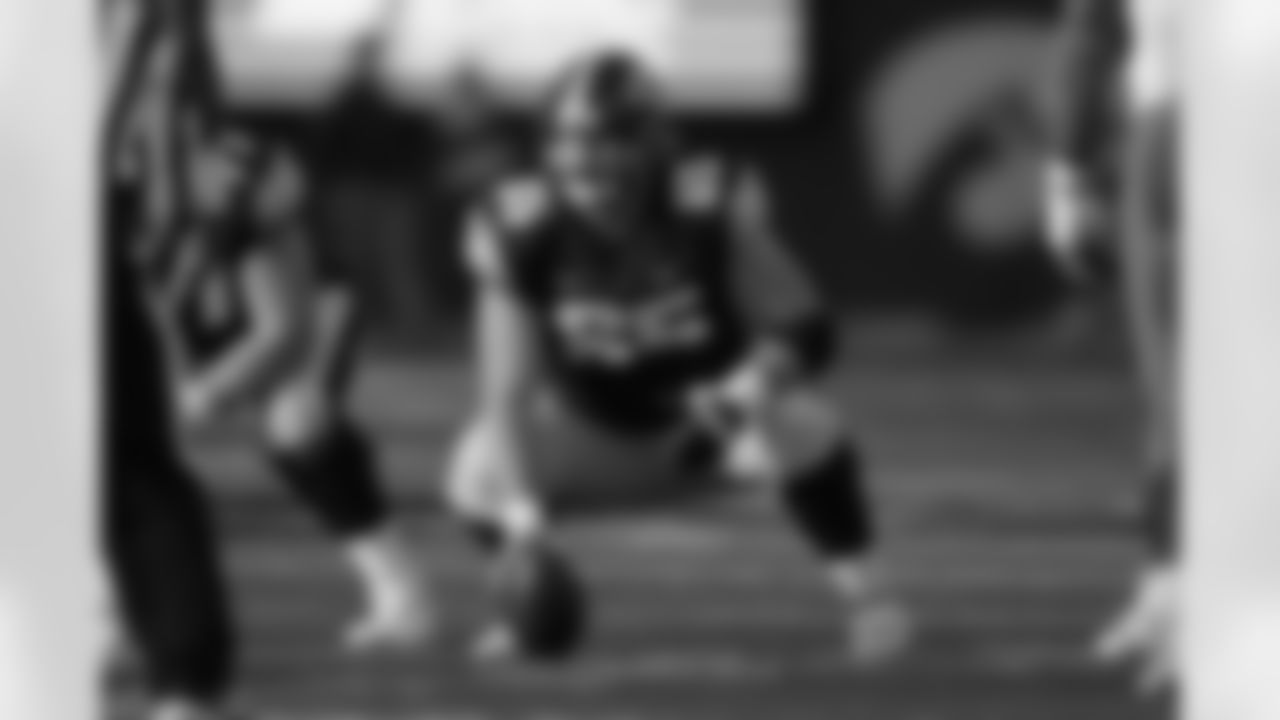
No. 27 Tyler Linderbaum, IOL, Iowa

No. 26 Malik Willis, QB, Liberty

No. 25 Jahan Dotson, WR, Penn State

No. 24 Kenny Pickett, QB, Pittsburgh

No. 23 Devonte Wyatt, DT, Georgia

No. 22 Charles Cross, OT, Mississippi State

No. 21 Dax Hill, S, Michigan

No. 20 Trevor Penning, OT, Northern Iowa

No. 19 Treylon Burks, WR, Arkansas

No. 18 George Karlaftis, EDGE, Purdue

No. 17 Nakobe Dean, LB, Georgia

No. 16 Jameson Williams, WR, Alabama

No. 15 Chris Olave, WR, Ohio State

No. 14 Trent McDuffie, CB, Washington

No. 13 Devin Lloyd, LB, Utah

No. 12 Derek Stingley Jr., CB, LSU

No. 11 Jordan Davis, DT, Georgia

No. 10 Kayvon Thibodeaux, EDGE, Oregon

No. 9 Jermaine Johnson II, EDGE, Florida State

No. 8 Evan Neal, OT, Alabama

No. 7 Drake London, WR, Southern California
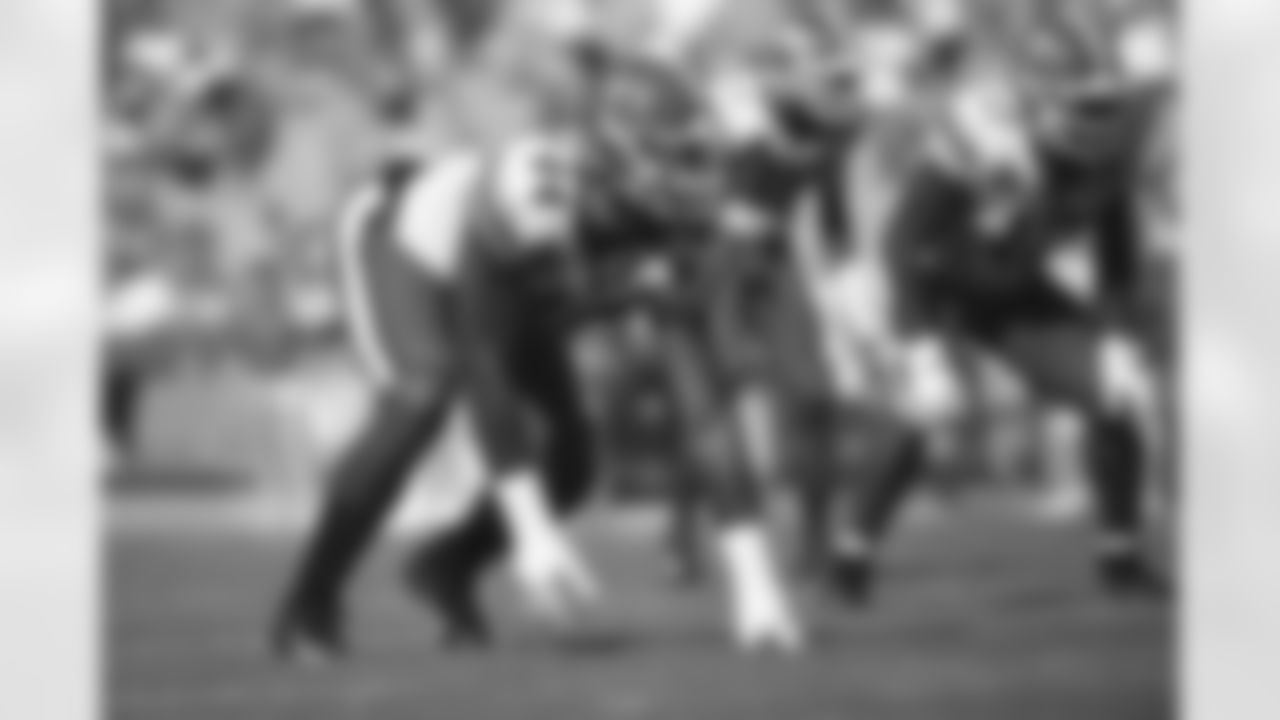
No. 6 Travon Walker, EDGE, Georgia

No. 5 Kyle Hamilton, S, Notre Dame

No. 4 Garrett Wilson, WR, Ohio State

No. 3 Ickey Ekwonu, OT, North Carolina State

No. 2 Ahmad "Sauce" Gardner, CB, Cincinnati

No. 1 Aidan Hutchinson, EDGE, Michigan
9. Ickey Ekwonu, OT, N.C. State
Analysis: "A gentleman in class and killer on the grass, Ekwonu goes from amiable to angry once he steps foot on the field. He's a long-limbed athlete and scheme-diverse run blocker with the potential to win with positioning or force. He has a highlight reel full of violent strikes and finishes but needs to cut his aggression with a little more control. The pass protection has seen rough patches over the last two years and that might continue until his hands and feet start working in unison. Punch timing and independent hands should bring immediate improvement, but getting him to play with better focus and control in his pass sets will take time. The football character and urgent field demeanor make it easier to grade the traits and anticipate him landing closer to his ceiling than his floor as either a guard or tackle."
Comparison: Kelechi Osemele
10. David Ojabo, EDGE, Michigan
Analysis: "Emerging edge defender who should see a substantial leap in play consistency with more time to work on his technique and learn the game. The upside is evident, despite his inexperience. At times, the run tape can be a rough study, but it improved as the 2021 season progressed. Ojabo's rush approach is fairly sophisticated with the feet and agility to juke, stutter, spin and race his way past offensive tackles. He's not ready to take on pro run blockers, but Ojabo is in the early stages of his physical and play development. It would be wise for evaluators to project and grade the flashes as a high-upside rush talent with 4-3 and 3-4 appeal."
Comparison: Cliff Avril
11. Derek Stingley Jr., CB, LSU
Analysis: "Uniquely gifted cornerback with rare blend of size, speed and explosiveness that will have teams willing to judge his upside off of tape from two seasons ago. Stingley played in just 10 games over the last two years, offering flashes of his upside rather than sustained play. Regardless of season, he's long, loose and extremely athletic. Elite speed and ball skills give him a chance to thrive as a bump-and-run corner capable of shadowing top talent around the field. He allows some separation from off-man but bursts to close distance instantly. He's well-suited for a variety of zone coverages but needs to play with much better zeal and toughness in run support. Stingley will likely measure and test like Marshon Lattimore, Patrick Peterson and Antonio Cromartie (depending on his weight), but he needs to find that breakthrough 2019 form in order to reach his potential as a lockdown cover talent."
Comparison: Stephon Gilmore
12. Garrett Wilson, WR, Ohio State
Analysis: "Wilson's game is lacking in polish, but some scouts believe his play strength and run-after-catch ability make him a more valuable draft commodity than Ohio State teammate Chris Olave. He's a linear, inside/outside receiver with trouble eluding press cleanly and is very inefficient with routes over the first two levels. His long speed is good, but the acceleration burst is what makes him such an effective separator in space. He might not be smooth getting there, but he has eye-popping ball skills when it's time to go make a play. Wilson needs to work on his ability to consistently uncover on all three levels, but he has the traits to become a very good WR2 if he tightens up areas of concern."
13. Jermaine Johnson II, DE, Florida State
Analysis: "Ascending edge prospect. Johnson has NFL traits and the potential to keep getting bigger and better as a pro. He is a one-year full-time starter with an underdeveloped pass rush and occasional lapses in awareness, but both areas should be correctable with more coaching and game experience. He's more instinctive and consistent as a run defender, but his length and relentlessness are excellent building blocks for challenging protection. Johnson's blend of strength and athleticism should make him a firm edge-setter and playmaker near the line of scrimmage for odd or even fronts. He has the traits, athleticism and talent to project as a top-40 pick with a bright future."
Comparison: Maxx Crosby
14. Jameson Williams, WR, Alabama
Analysis: "Linear route-runner with electric long speed to impact a game as a home-run hitter or decoy drawing defenders away from other elements of the offense. Williams ruins man coverage but faces some limitations. He has issues getting off press cleanly and might require some scheming to help get off the mark cleanly against certain corners. Catch toughness can be inconsistent when contested or in heavily trafficked areas. He has all the juice to find consistent separation on vertical, over and post/corner routes and could see monstrous production if paired with a high-end talent at quarterback. The ACL tear could play a role in determining his ultimate draft destination, but it's unlikely to change his game."
Comparison: Will Fuller
15. Chris Olave, WR, Ohio State
Analysis: "The quiet storm of the Ohio State wide receiver corps, Olave is smooth, steady and makes things happen. His movements are fluid and easy from snap to the catch and all points between. He's fast but efficient and plays with the bend and foot agility to uncover on all three levels. Olave possesses natural, well-rounded ball skills but needs to add play strength to ward off the physical challenges that are headed his way. His play traits should allow for success beyond the scheme and talent advantages surrounding him at Ohio State. He is an inside/outside hybrid appealing to offenses looking for a field-stretcher with the ability to take on a sizable catch load."
Comparison: Terry McLaurin
16. Kenyon Green, G, Texas A&M
Analysis: "Guard prospect with NFL-ready frame who plays with an impressive level of consistency as a run blocker. Green moves defenders from Point A to Boint B against their will, using hand technique and road-grading leg drive. He possesses adequate foot quickness to operate in a variety of run schemes, but needs to eliminate his tendency to grab when his opponent is slipping away from the block. He has pop and anchor in pass protection, but lacks recognition and mirror technique needed to be at his best against athletic interior rushers. While green has some areas to improve, his run blocking can be dominant, which gives him a chance to become a good starter very quickly."
Comparison: Richie Incognito
View photos of the best players ever to be selected with the Nos. 5 and 7 picks in NFL draft history.


1940: No. 7 C/LB Clyde "Bulldog" Turner (HOF)

1944: No. 5 HB Steve Van Buren (HOF)

1945: No. 5 HB/E Elroy Hirsch (HOF)

1946: No. 5 T George Connor (HOF)

1957: No. 5 QB Len Dawson (HOF)

1958: No. 7 LB Chuck Howley

1961: No. 5 TE Mike Ditka (HOF)

1964: No. 5 DE Carl Eller (HOF)

1965: No. 5 RB Gale Sayers (HOF)

1976: No. 5 DB Mike Haynes (HOF)
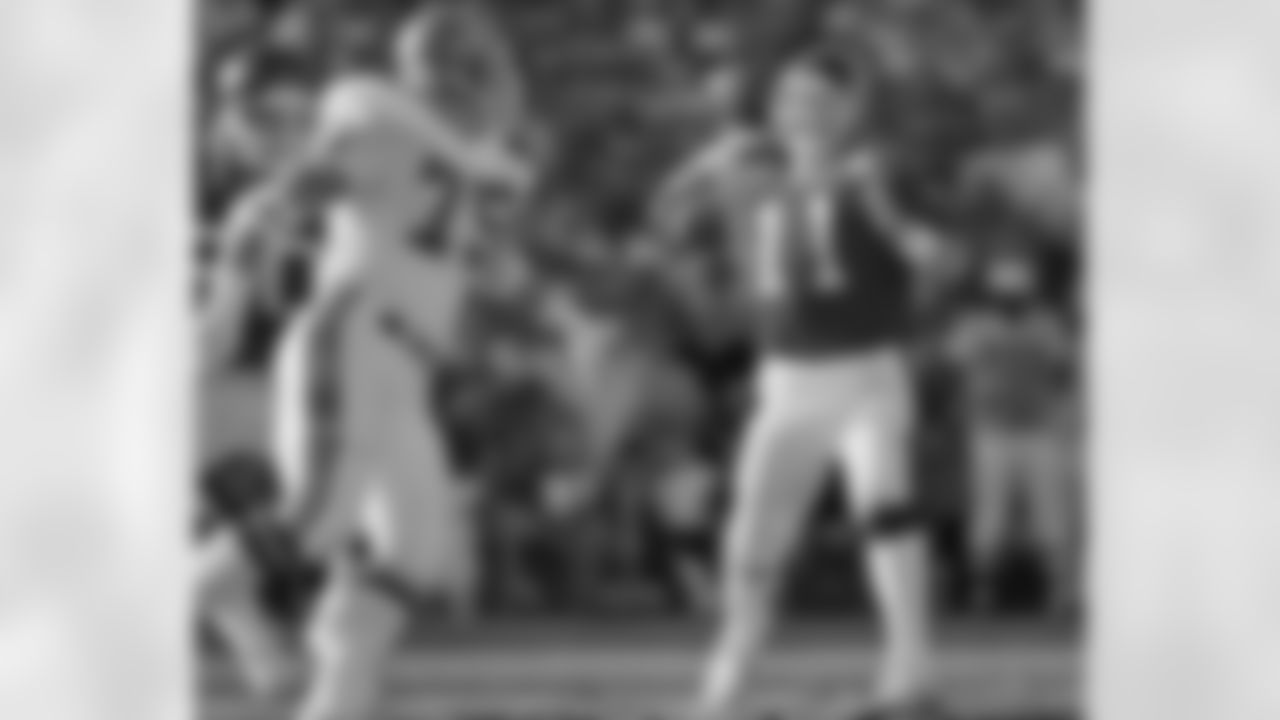
1979: No. 7 QB Phil Simms
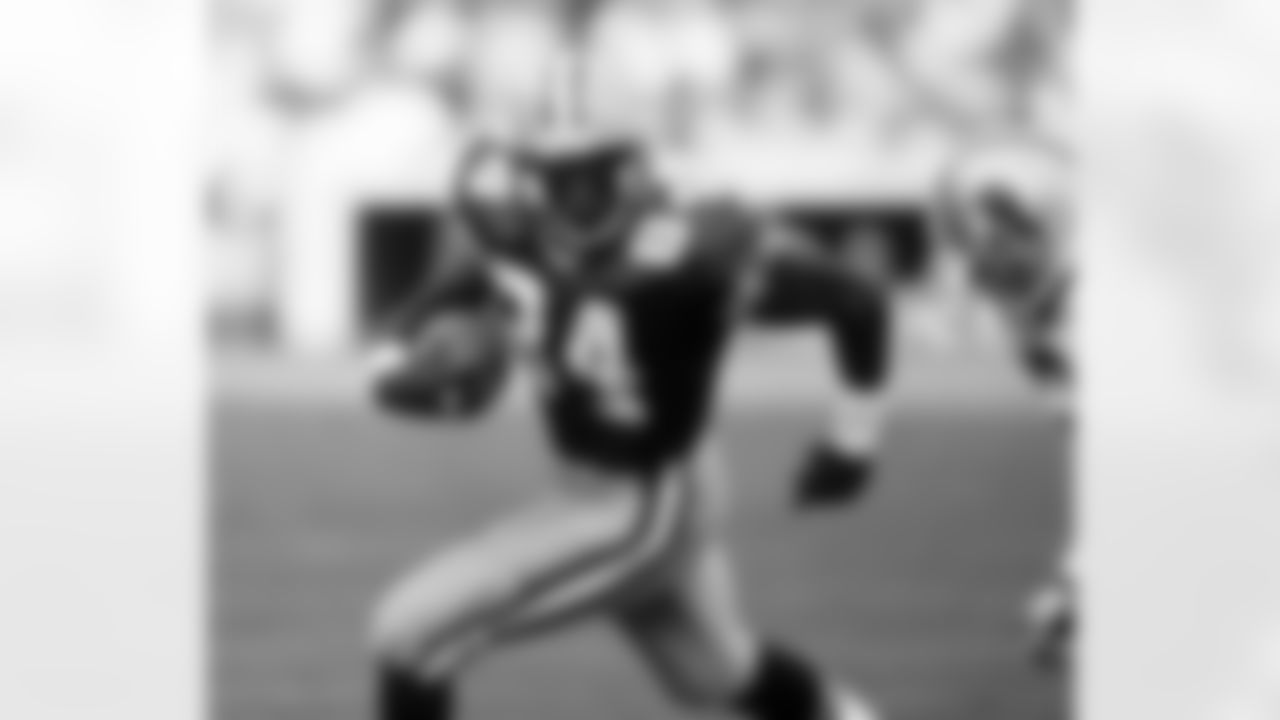
1988: No. 7 WR Sterling Sharpe

1989: No. 5 DB Deion Sanders (HOF)

1990: No. 5 LB Junior Seau (HOF)

1992: No. 7 DB Troy Vincent

1994: No. 7 DT Bryant Young

1995: No. 5 QB Kerry Collins

1996: No. 7 WR Terry Glenn

1997: No. 7 WR Ike Hilliard

1999: No. 7 DB Champ Bailey (HOF)

2001: No. 5 RB LaDainian Tomlinson (HOF)

2004: No. 5 DB Sean Taylor

2007: No. 7 RB Adrian Peterson

2010: No. 5 DB Eric Berry

2011: No. 5 DB Patrick Peterson

2014: No. 5 LB Khalil Mack

2014: No. 7 WR Mike Evans

2015: No. 5 OL Brandon Scherff

2016: No. 5 CB Jalen Ramsey

2016: No. 7 DE DeForest Buckner
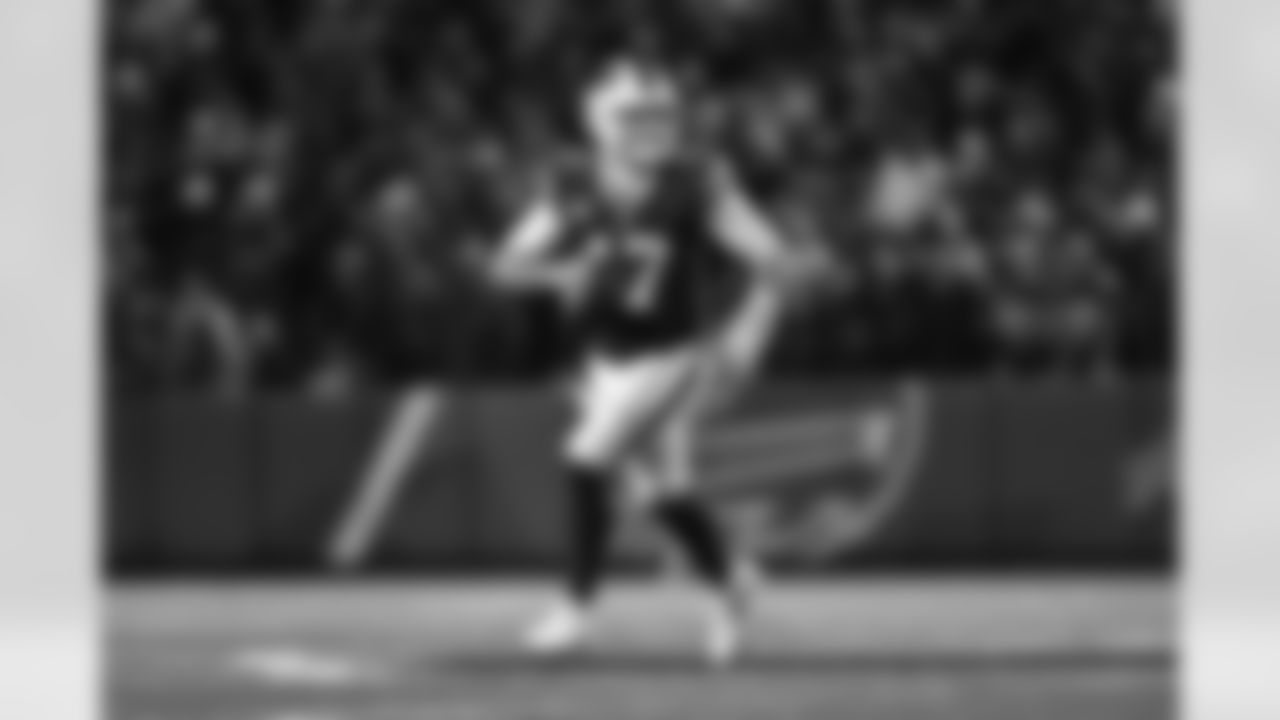
2018: No. 7 QB Josh Allen

2019: No. 5 LB Devin White

2021: No. 5 WR Ja'Marr Chase
17. Jordan Davis, DT, Georgia
Analysis: "Beefy, mountainous nose tackle with the size, power and will to clog the drain and alter the offense's desire to run between the tackles. Davis has anchor and quick-shed talent to eviscerate single blocks and successfully occupy double teams, allowing linebackers to thrive in pursuit of ball-carriers. He plays upright, lacking agility and reactive quickness to mark up a stat sheet with any consistency, but that's not what he's asked to do. Davis won't be as effective against outside-zone teams and won't offer much rush, but he could become one of the league's best run-pluggers as soon as he takes the field."
Comparison: Ted Washington
18. Charles Cross, OT, Mississippi State
Analysis: "Two-year starter who plays with a high level of consistency from game to game, no matter the opponent. Cross is an average athlete but he's strong, plays to his length and has sticky, strong hands. Despite limited starting experience, he's well-schooled and knows how to play. He has average slide range, so edge rockets are going to beat him to the top of the rush at times, but he does a nice job of utilizing length and footwork to recover when beaten. He plays with strong, inside hands and a broad, powerful core. He's an ace at neutralizing power rushers and is above average in sustain and finish modes as a drive blocker. Cross' play strength, hand placement and body control should allow for a relatively smooth transition into the league, where he can become a good, long-time starter at either tackle position."
Comparison: Taylor Moton (physical) / Tristan Wirfs (play)
19. Kyler Gordon, CB, Washington
Analysis: "Cornerback who comes with an elite, high-performance engine but a GPS still in the process of loading. Gordon's dynamic athletic qualities will show up in testing, but more importantly, they are all over his tape. His blend of play strength and explosive burst affects the passing game from press, off-man and zone coverages. He plays with an alpha demeanor and hitting is definitely part of his overall package. Gordon lacks polish and needs to play with better route recognition and anticipation, but if those elements click, his ball production could be near the top of the league as one of the top playmakers in the game."
Comparison: Byron Jones
20. Bernhard Raimann, OT, Central Michigan
Analysis: "With alluring athleticism and an impressive skill set, Raimann is just scratching the surface of his potential. His initial transition from tight end to left tackle occurred in 2020 amid the COVID-19 pandemic, making his rapid transformation fairly remarkable. He is a much better technician than he should be at this stage, but his approach is also mechanical and he could struggle against sophisticated edge defenders until he learns to diversify his pass sets and hand usage. Raimann's instincts and fundamentals at the position are still in a developmental phase so bumps in the road are expected, but his best football is ahead of him and he should become a long-time starter at left tackle."
Comparison: Sebastian Vollmer
21. Matt Corral, QB, Mississippi
Analysis: "Small quarterback with a big heart who has learned to play with better maturity and control without losing his edge. Corral played in a quarterback-friendly scheme with well-defined reads, so he needs to prove he can work through full-field progressions and make good decisions with the ball. He's decisive, operating with a quick-trigger release to challenge tight windows and possesses the touch to make challenging bucket throws. He's a fiercely competitive runner but needs to get his slide game up as he's not built to take the pounding from called runs or scrambles. Corral is mobile, but his poise and accuracy wane when forced to move. Discipline has benefitted Corral and he's clearly at his best when operating on-schedule and in rhythm. A spread-based scheme and a player-friendly head coach gives Corral the best opportunity to live up to his potential and challenge to become the best QB from this draft class."
Comparison: Baker Mayfield
22. Nakobe Dean, LB, Georgia
Analysis: "Explosive, three-down linebacker with the demeanor and quickness to become a volume tackler while holding down third-down duties at a high level. Dean's play recognition is a work in progress, which limits reaction time and forces him to deal with more blockers than he'll see as he gains more experience. Quick feet and plus agility will bring him to ball-carriers at a high rate but a lack of size and length means he'll need to fine-tune his approach as a tackler to make sure he finishes what he starts. He might lack measurables, but he has the toughness and technique to see a boost in his performance once his play becomes more proactive."
Comparison: Devin Bush
23. Trevor Penning, OT, Northern Iowa
Analysis: "Three-year starter at left tackle with outstanding measurables on a low-cut, well-built frame. Penning plays with a level of disgust for anyone lining up against him and seeks out violent block finishes when possible. He's athletic enough to block on the move and has the potential to shine as a powerful drive blocker. Size, length and know-how have been more than enough to ward off FCS pass rushers, but he needs to operate with better inside-out positioning while developing much firmer edges to succeed against a more talented group of quarterback hunters. Penning has both traits and toughness but the tape can leave you wanting just a little more from him. He should become an instant starter at left or right tackle but the jump in competition will take time to navigate."
Comparison: Jon Runyan Sr. (size/demeanor) / Riley Reiff (play style)
24. Kenny Pickett, QB, Pittsburgh
Analysis: "Pickett has five years of game experience and four years of starting experience for Pitt. He's a fairly toolsy pocket passer with good mobility. He operated in a passing scheme featuring vertical concepts that created big-play opportunities but left food on the plate when he failed to play chess against the back-end of the coverage. Pickett works with average anticipation but drives the ball with good velocity, which should help him shine in pre-draft passing drills. Pickett's touch and placement need work, but his accuracy stats were damaged by an inordinate amount of drops throughout his career. The top indicator for future success or failure will likely rest in a team's ability to build Pickett's trust, poise and discipline from the pocket. He can make all the throws, but he'll only be able to execute against disguised fronts and NFL pressure if he's willing to hang in and win with his eyes first. He carries a boom/bust label, but the 2021 tape and productivity showed off his potential to become a good starter in time."
Comparison: Andy Dalton (in prime years)
25. Andrew Booth, CB, Clemson
Analysis: "A press/zone combo corner with good size and length, Booth plays with an urgent, competitive nature. He has the strength, balance and foot agility to press and slow the release. He has limited starting experience, though. He will need more development to prevent route specialists from manipulating his feet and hips. Booth has the ball-tracking and play strength to find and maintain top-dog positioning through catch tries. He's more effective in off coverage underneath than tight man. He needs to play more football, but his ball-hawking instincts, burst to close and toughness in run support will be very appealing for zone teams looking for an upgrade at cornerback."
Comparison: Jackrabbit Jenkins
26. Devin Lloyd, LB, Utah
Analysis: "Highly productive and highly physical, Lloyd could create interesting discussions in draft rooms as teams work through his process versus production. Lloyd can be a little inconsistent with early diagnosis and fit recognition and unorthodox in how he flows to the football. With that said, he has a stat sheet full of production in every major category, including 43 tackles for loss over the last three seasons. He plays with the willful demeanor of an NFL alpha linebacker and is sneaky talented as a rusher either blitzing or aligning off the edge. Lloyd will make plenty of plays and should become a good starter as an inside or strong-side linebacker, but inconsistent process could limit his consistency."
Comparison: Willie Gay
27. Jaquan Brisker, S, Penn State
Analysis: "Athletic safety prospect whose versatility and toughness will endear him to coaches during the evaluation process. Brisker continued to pick up elements of the defensive scheme and his play has steadily transformed from hesitant in 2019 to downright instinctive in 2021. He has the versatility to become a moving chess piece in a variety of coverages and has the size and talent to match up with both "Y" and "F" tight ends. He played with a banged-up shoulder in 2021 so his 2020 tape is a clearer indicator of his run support acumen. Brisker is an ascending talent with the NFL traits to become a long-time starter as a Day 2 draft pick."
Comparison: Justin Reid
28. Bryan Cook, S, Cincinnati
Analysis: "Skilled enforcer with the size, toughness and instincts to put his stamp on the game in a variety of ways. Cook plays with the confidence and consistency of a pro safety and loves to run and hit. His blend of football intelligence, athleticism and physicality makes him an ideal fit for matchup-oriented defenses looking for versatile back-end chameleons. He can be used as an add-on run defender, match up on "F" tight ends or play on the back-end. Cook needs to answer questions about his speed and play with focus and leverage as an open-field tackler, but he's reliable and talented. He could become a good starter early in his career."
Comparison: Julian Blackmon
29. George Karlaftis, EDGE, Purdue
Analysis: "Edge defender with good power and a relentless motor to keep the heat on offensive counterparts throughout the game. Karlaftis' best production came in 2019, as he missed half of Purdue's 2020 season and saw teams focus more energy toward stopping him in 2021. He's a lift-and-leverage run defender at the point of attack but fits into a "team defender" column more than "premium run-stopper" category. He's a force-based rusher with anchor-busting power and the ability to get to his counters when the rush begins to stall. With just two full seasons under his belt, there will be more development headed Karlaftis' way. He's a future starter as a strong-side defender in an even or odd front."
30. Desmond Ridder, QB, Cincinnati
Analysis: "Four-year starter and four-year winner whose hard work at his craft altered his standing from good college quarterback to early-round draft pick. There is nothing special about Ridder's size or arm talent but his improved confidence and field command has really helped him mature at the position. He plays in rhythm and operates with consistently repeatable footwork and mechanics. He's intelligent and processes quickly, which should help him find where the football needs to go regardless of passing scheme. Getting the ball to NFL targets accurately and safely, however, is not a given. Despite favorable mechanics, his accuracy and ball placement need work and he doesn't have the arm strength or release quickness to consistently survive off-target throws against pro coverage. He can run but is more of a pocket passer who can win with his legs than a true dual-threat quarterback."
Comparison: Alex Smith
31. Boye Mafe, EDGE, Minnesota
Analysis: "Mafe's evaluation requires the evaluator to focus more closely on the flashes than just the play-to-play action. His combination of rare explosive measurables with average fundamentals could make for a perfect storm of rapid development once he gets focused skill work at the pro level. His footwork is average and he lacks desired instincts as a rusher, but pairing efficient hand work with twitchy upper-body power could turn him into a productive rush bully. He has the traits and toughness to develop into an above-average starter as a 4-3 base end."
Comparison: Rashan Gary
32. Devonte Wyatt, DT, Georgia
Analysis: "Highly active defensive tackle with decent strength. Wyatt is made for movement and disruptions. He helped himself in 2021 with better tape both against the run and as a pass rusher. His lateral quickness is useful in beating zone blocks and in sliding across the front in a game-based pass rush. Wyatt has adequate strength but struggles to withstand a second blocker. The traits are average, but the effort is consistent and Wyatt should fit nicely as a rotational, gap-seeking three-technique with disruptive flashes."
Comparison: Maliek Collins








